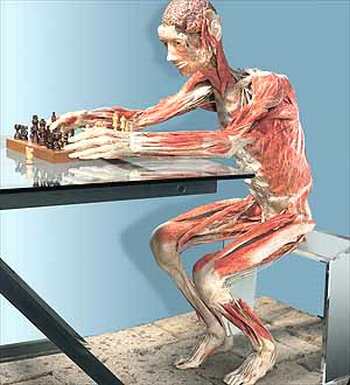Same bodies, different worldviews
 There's a controversy in Cincinnati about the "Bodies ... The Exhibition." However, it appears that there is no controversy at all about the same show in Baltimore. Does that tell us something about the two cities, the two Catholic hierarchies or the two newspapers? Honestly, I can't decide.
There's a controversy in Cincinnati about the "Bodies ... The Exhibition." However, it appears that there is no controversy at all about the same show in Baltimore. Does that tell us something about the two cities, the two Catholic hierarchies or the two newspapers? Honestly, I can't decide.
GetReligion has covered the whole "Bodies" controversy before. There isn't any question that, from a Roman Catholic and Eastern Orthodox perspective (at the very least), the idea of hauling 20 human cadavers around the world as education/entertainment is problematic.
If you want to understand why this is controversial, then click here and read Father Michael A. Seger's Cincinnati Enquirer commentary called "Plasticized bodies disrespect our value of people as spiritual beings." This was a nice op-ed to run to help readers understand the big news story in town. Here's a key piece of that main story:
The controversy surrounds the way the bodies were obtained: They're unclaimed or unidentified Chinese citizens who gave no consent to be exhibited after death. A small group protested Thursday night. Critics claim that, given China's record of human rights abuses, they could well be political prisoners who were starved or tortured to death. ...
The controversy swelled Monday when Cincinnati Archbishop Daniel Pilarczyk told archdiocese elementary and secondary schools that no Catholic schools should plan field trips to the exhibit because "it seems to me that the use of human bodies in this way fails to respect the persons involved."
Covington Bishop Roger Foys released a similar statement, saying, "our Catholic schools in the Diocese of Covington should not arrange field trips to the exhibition."
Here's the key, from GetReligion's perspective. The Enquirer printed a variety of viewpoints about this controversy -- which is what a newspaper is supposed to do. Good on them.
 But this also required the newspaper to admit that the topic was controversial in the first place. Compare that story with the following Style piece in the Baltimore Sun.
But this also required the newspaper to admit that the topic was controversial in the first place. Compare that story with the following Style piece in the Baltimore Sun.
Controversy? What controversy? This glowing report is all praise, all the time.
Oh, it seems that there was some controversy about this topic -- long, long ago -- but not in this enlightened age. So there.
For much of history, the science of anatomy was at the mercy of powerful religious and cultural taboos. In the late 15th century, when Italian Renaissance artists such as Leonardo da Vinci and Michelangelo first began to teach themselves the basics of human anatomy by dissecting corpses at morgues, they literally had to risk their lives to uncover nature's secrets.
A papal decree from 1300 had made dissecting corpses a crime punishable by death. As a result, the body's interior was terra incognito not only to artists seeking to represent the human form more accurately, but even to physicians.
Yes, that is interesting information. But it hardly replaces the valid, emotional news hook in the here and now. To cover both sides of the story, you have to admit that both sides exist.